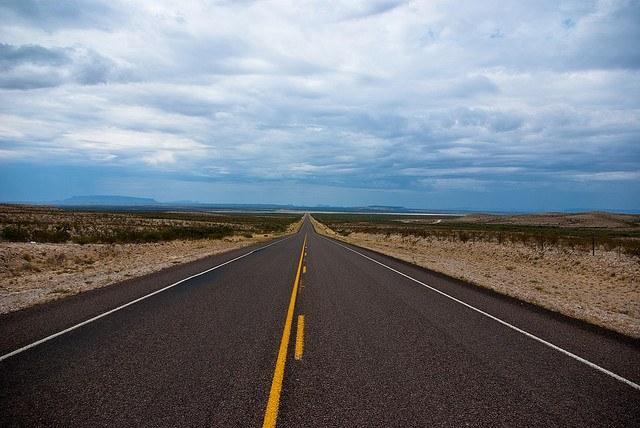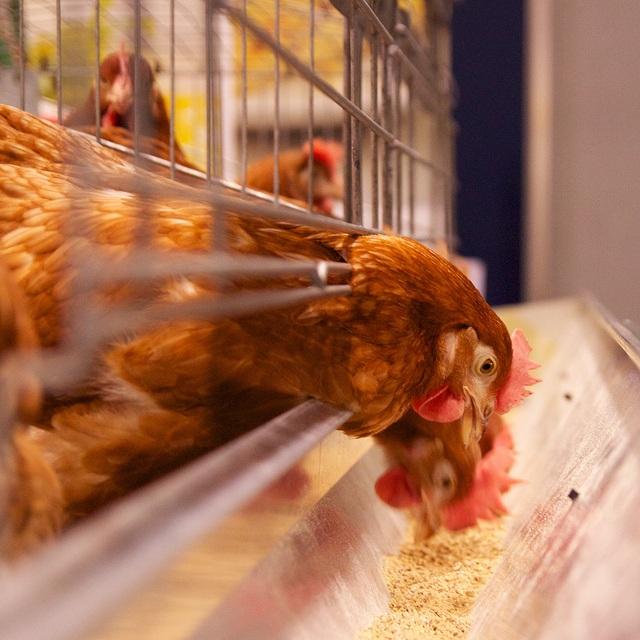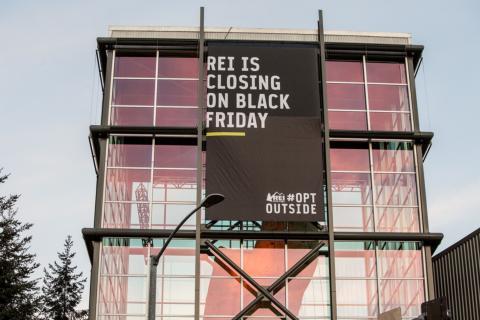Richer nations less concerned about climate change: poll


Global public concern about climate change has declined over the past six years, especially in industrialized countries, finds a new 21-country poll from GlobeScan.
Less than half (48%) of citizens living in industrialized countries (OECD members) now rate climate as a “very serious” problem, down from 63% in 2009. Interestingly, a higher percentage of citizens in non-OECD countries (54%) now rate climate as a “very serious” problem.
Only 8% of citizens across 21 countries polled want their government to oppose any climate deal being reached in Paris. An average of 43% want their government to play a leadership role in setting ambitious targets, while another 40% want their government to take a more moderate approach and support only gradual action.
The poll findings also suggest that citizens have become significantly more informed about climate change over the past 15 years. Almost twice as many today blame human-caused climate change or rising CO2 levels for extreme weather events, compared to a GlobeScan poll in January 2000. More than seven in 10 people now point to human factors, including pollution and other causes, as the reason for extreme weather events when asked without prompting.
Doug Miller, GlobeScan Chairman, comments: “Our polling suggests a less supportive public opinion context for a Paris deal this year compared to stronger support that existed prior to the failed Copenhagen Climate Summit in December 2009. Real leadership and effective diplomacy will be needed for success in Paris.”
Picture credit: Dreamstime.com
Less Meat Consumption Critical to Achieve Global Climate Goals


Studies suggesting that the global meat industry has a larger environmental impact than the emissions coming from the world’s entire transportation industry are hardly new. But with the COP21 climate talks in Paris scheduled to launch in less than a week (rather inconveniently after American Thanksgiving, especially for those millions of turkeys), the stubborn fact persists that this very uncomfortable, yet unrelenting, challenge merits discussion as society finds a way to limit global warming to 2 degrees Celsius this century.
To that end, the venerable Chatham House, the London-based independent policy institute, released a report this week that insists reducing meat consumption is crucial if the world is to limit the impacts of climate change in the coming decades.
The big hurdle? As the global middle class continues to grow, the demand for animal protein keeps surging. Chatham House researchers suggest that global meat consumption could increase as much as 76 percent by mid-century. Per capita demand for meat is flat-lining in most developing nations, but in industrialized countries, the average person consumes twice as much meat as most nutritionists believe is healthy — and three times as much in the United States than what dietitians generally say is sufficient.
The convergence of low public awareness, and politicians skittish of powerful lobbies, pose a daunting task in communicating the need to eat less meat. But the authors of the Chatham House report maintain that these challenges are surmountable, based on surveys in 12 countries and discussions with stakeholder groups and focus groups in large economies including the U.S., China, Brazil and the United Kingdom.
The start, according to Chatham House, is raising the public’s understanding of the links between meat consumption and the risks that climate change present. Such efforts only comprise a first step, however; the report’s analysts suggest that governments need to take leadership on this issue. After all, the global meat industry’s attempts to become more “sustainable” have proven to be little more than window dressing.
And therein lie the tasks governments must face: They have got to initiate debates about meat consumption that resonate with citizens and move the discussion forward within business, the media, civil society and the scientific community. Depending on the country, however, a national conversation would take different forms. The focus could be on health, as in countries such as the U.S. that struggle with obesity. Food safety could be the emphasis in countries such as China, which has had far too many gruesome episodes with tainted meat. And while the “culture of celebrity” endemic in many nations sparks many an eye-roll, the fact is that "influencers" in society could also be engaged in order to establish and promote ways to decrease meat consumption.
The Chatham House survey is full of theory and heady analysis; the difficult part, however, will be on how government wonks can work with other stakeholders to convince citizens to eat less meat in order to reduce pollution, improve public health and minimize environmental degradation. The reality is that governments will have to take measures that the global meat industry will fight tooth and nail.
For example, Chatham House’s researchers pointed to a British study suggesting that carbon pricing weaved into some food prices, including meat, could decrease emissions, improve citizens’ health and even raise revenues. Another tactic is analogous to what advocates for clean energy have long demanded: Just as governments should no longer subsidize fossil fuels, analysts recommend that nations explore ways in which to reduce or even eliminate subsidies on carbon-intensive food products such as meat and dairy.
The evidence that more of a plant-based, vegan diet does wonders for the human body and, in the long run, the environment is well established. But convincing 7 billion people to move in that direction will be a herculean effort; the Chatham House report, however, sets the table for the conversations that will be needed in the years to come.
Image credit: Leon Kaye
Defining Corporate Purpose is the Only Way Forward


By Paige Morrow
The future of sustainable development is being shaped by events such as the U.N. Forum on Business and Human Rights held earlier this month in Geneva, the Climate Change Conference in December, and the adoption of the Sustainable Development Goals in September. Considering that many corporations have greater turnover than the GDP of several countries and that 500 transnational corporations control roughly 80 percent of world trade, it is clear that we need business on board. The way these corporations are governed is essential for either positive or negative change of the system as a whole, depending on the chosen stewardship, which takes us to the central question: What is the purpose of the corporation?
A corporation may decide to maximize profits and share price it is a permitted objective, but not one that is required by law. The purpose of a corporation is instead whatever its founders wish it to be, as long as it is legal. Thus, it might be to make innovative products, develop cutting edge technology, build a spaceship or create the next penicillin. The law has left a vacuum allowing companies to decide what their purpose should be. Unfortunately, the current model of corporate governance is based on the popular conception that the sole or primary purpose of the corporation is to maximize its value for shareholders.
The often myopic focus on share price is driven by a business culture that is based on this misunderstanding of the legal obligations of directors and a corporate governance system that empowers shortterm oriented shareholders and facilitates the demands of capital markets. This approach has resulted in decision making within companies that focuses on quarterly earnings and creates perverse incentives that encourage problematic practices such as stock buybacks. This way of doing business is also implicated in a range of unintended social, human rights, and environmental consequences. It compels companies to externalize as many costs as they can get away with (e.g. companies’ carbon footprints and supply chains issues). It is also a driving force behind growing inequality (e.g. the pay gap between average workers and bonusdriven top management compensation, the race to the bottom in the cost of labour, and the reallocation of resources to shareholders).
Not surprisingly, the focus on maximizing shareholder value ultimately undermines the viability of companies in the longterm as they are not reinvesting their returns into R&D, human capital, addressing systemic risks and exploiting strategic opportunities. The maximizing shareholder value imperative drives spending of corporate resources and time of top management on strategies such as buying other companies, paying out dividends to shareholders and buying back shares.
Furthermore, according to an article published in the Harvard Business Review by William Lazonick, professor of economics at UMass Lowell, the focus on short-term returns has resulted in a shift from “value creation” to “value extraction," contributing to “employment instability and income inequality."Corporate governance must evolve into a model that balances the interests of investors, workers, consumers, communities, and the environment, allowing businesses to thrive while contributing to broader sustainability. For this to happen, it is essential that we shift the policy discussion from a singleminded focus on shareholders to a more holistic understanding of their role in the firm.
Image credit: Flickr/Corey Leopold
Paige Morrow is head of Brussels Operations at Frank Bold, a purpose-driven law firm. The firm leads the Purpose of the Corporation Project, which invites businesses, academics, policymakers, and civil society to debate the future of publicly traded companies. Connect with us on @purposeofcorp or on our Linkedin Group.
Report: Boost Renewables, Halve Emissions


Representatives from the world’s nations will meet in Paris from Nov. 30 to Dec. 12 to craft a successor to the Kyoto Protocol. The world is already almost halfway to the 2 degrees Celsius global temperature rise that experts warn we just can’t go beyond, according to data released earlier this month by the U.K.’s Met Office. Before this year’s end, we could make it halfway to the 2-degrees benchmark.
Fortunately, there are ways that greenhouse gas (GHG) emissions can be reduced. Scaling up renewable energy is one key measure, as a recent report by the International Renewable Energy Agency (IRENA) found. Achieving a 36 percent share of renewable energy by 2030 would provide half of the emissions reductions needed to keep temperature rise to 2 degrees.
The world’s population is expected to continue growing, and that means electricity demand will also continue to rise. Over the last 40 years, the world’s population grew from 4 billion to 7 billion people, and electricity generation grew by over 250 percent. “This growth will continue,” the report declares. In 2030 there is predicted to be over 8 billion people in the world, with 5 billion living in urban areas. World electricity generation is predicted to increase by 70 percent.
Unfortunately, the average emissions intensity of electricity production has “barely changed” during the last 20 years, the report states. The gains from the increasing deployment of renewable energy and less intensive fossil fuels like natural gas have been offset by the increasing use of coal and less efficient power plants. “Without a substantial increase in the share of renewables in the mix, climate change mitigation will remain elusive,” the report warns.
If we continue with business as usual, we will not keep emissions down to the recommended level. Under current policies and national plans, average carbon emissions will only decrease to 498 grams of carbon per kilowatt-hour of energy (g/kWh) by 2030. And that is not enough to keep carbon levels below 450 parts per million (ppm), the level that climate experts warn we don’t want to exceed. However, doubling the share of renewables would reduce emissions to 349 g/kWh, which is equivalent to a 40 percent intensity reduction compared to 1990 levels.
The good news is that solar photovoltaic (PV) prices have decreased by 80 percent since 2008. They are expected to keep on falling. Solar PV can compete without subsidies. Power from a new 70 megawatt (MW) solar plant being built in Chile is expected to sell on the national spot market and compete directly with fossil fuel-based electricity, the report cites as an example.
The price of onshore wind electricity has also decreased. Since 2009, it has fallen by 18 percent and turbine costs fell almost 30 percent since 2008. That makes onshore wind the “cheapest source of new electricity in a wide and growing range of markets,” the report proclaims. And even better news is that renewable power capacity has increased by 85 percent over the last 10 years. Currently, renewable energy accounts for 30 percent of all installed power capacity.
Business is playing an important role in renewable energy deployment. There are several examples cited by the report, including Ikea’s use of wind and solar energy to meet 37 percent of its energy needs. Google’s investment of over $1.4 billion in wind and solar power is another example. However, more investment needs to occur. The total investment in renewable energy increased from $40 billion in 2004 to $214 billion in 2013 (excluding large hydropower), but it fell short of the $550 billion needed annually until 2030 to double the global share of renewable energy and “avert catastrophic climate change,” the report warns.
Renewable energy offers a “route” to reducing GHG emissions. Electricity accounts for over 40 percent of man-made carbon emissions. Solar, wind, hydroelectric, geothermal and bioenergy are 10 to 120 times less carbon intensive than natural gas, considered to be the cleanest fossil fuel, and up to 250 times lower in carbon than coal. The report estimates that doubling the share of renewables, combined with more energy efficiency, can keep atmospheric carbon below 450 ppm.
That is good news indeed and something for the world's representatives to think about as they meet in Paris.
Image credit: Flickr/Martin Abegglen
Jack in the Box and General Mills Commit to Sourcing Cage-Free Eggs


There will be more hens in the U.S. that can escape being confined in spaces so small they can’t flap their wings. Two companies have recently committed to sourcing cage-free eggs. And as Josh Balk, director of food policy at the Humane Society of the U.S. (HSUS), told TriplePundit: “This is certainly good news.”
One of those companies is the fast food chain Jack in the Box which plans to have its entire egg supply cage-free by 2025, according to its animal welfare report. The company has almost 3,000 restaurants in the U.S. and also owns Qdoba Mexican Eats, which has almost 700 restaurants.
“In response to evolving research on cage-free housing environments, and to consumers’ changing expectations and preferences, we have informed our egg suppliers of our expectation that they transition the majority of our egg supply to cage-free by 2020, and to fully transition to cage-free eggs by 2025,” the recently released report states.
“While, of course, five to 10 years is a long time for chickens to remain in cages, this is still great progress,” wrote Wayne Pacelle, president and CEO of the Humane Society of the U.S. (HSUS) in a blog post. “And while cage-free, of course, does not solve all of the animal welfare problems in egg production, Jack in the Box’s announcement represents a major step forward.”Pacelle noted that 2015 “is the year that the nation decided to shed battery cages in favor of cage-free production.” He cited Taco Bell’s recent announcement that 100 percent of its 6,000 restaurants will use only cage-free eggs by Dec. 16.
General Mills is the second company to commit to sourcing cage-free eggs. In a recently updated animal welfare policy, the company committed to sourcing 100 percent cage-free eggs for all of its U.S. operations by 2025. “Eggs are an important ingredient in many of our products, and we strive to ensure that the hens laying these eggs are treated humanely,” the policy stated.
General Mills noted in its policy that Häagen-Dazs, its largest international business, already sources only cage-free eggs for all of the ice cream produced in Europe.
Both commitments “further demonstrate that these systems have no place in our country,” Balk said. He added that the two commitments are “going to affect many egg-laying hens.”
Why are companies embracing animal welfare?
Why are more and more companies creating animal welfare policies? One of the main reasons is because of consumers. A 2010 study by Context Marketing found that 69 percent of those polled said they are “willing to pay more for food produced to higher ethical standards.” Over 90 percent identified three main qualities they associate with ethical standards and one of them was “treats farm animals humanely.”More recent surveys found similar results. A survey conducted in August 2015 by the Hartman Group found that 44 percent of those polled said they wanted to know more about how food companies treat the animals used in their products. Almost half (47 percent) said they support companies that avoid inhumane treatment of animals, a six-point increase from a similar survey in 2013. Sixty-five percent said they wanted animals raised in as natural an environment as possible.
Here are results from other surveys:
- Almost 95 percent of those polled by American Humane in 2014 said they were “very concerned” about the welfare of farm animals.
- 69 percent of respondents to a 2014 survey by ORC International said they prioritize animal welfare as a significant factor in deciding what foods to buy.
- A survey of West Coast consumers, commissioned by Foster Farms, found that 49 percent “completely agreed” that they are more concerned about animal welfare and how animals are raised for food than they were five years ago. And 74 percent “completely agree” that they would like more large producers to raise animals for food in a humane way.
Consumers are becoming even more informed now. Balk attributes that to two things: media attention and social media. There have been numerous articles about animal welfare in general and the cages that house far too many hens in the U.S. There have also been undercover investigations. Before social media, organizations like HSUS would have to send out videos to news organizations and activists. Now, social media allows people anywhere to post videos from undercover operations and millions can see it. “It was impossible to do that before social media,” Balk said.
Image credit: Flickr/Matt MacGillivray
Caterpillar launches pilot phase of free e-learning in Africa


American heavy equipment giant Caterpillar has launched the pilot-phase of its Technicians for Africa Project, an e-learning website for people who aspire to become a technician in Nigeria, Mozambique and DR Congo.
“This is just one of the ways that we’re looking to boost the skills in the industry as a whole. There is a vital need for skilled labour across these sectors in Africa. We are proud to see the launch of this initiative,” said David Picard, Region Manager responsible for Caterpillar’s distribution in Africa.
The website, which is available in French, Portuguese and English, is leveraging Caterpillar’s existing, state of the art e-learning solutions and makes them available for anyone in the three countries that has the ambition to develop a career as a heavy equipment Technician.Those who register for the curriculum will have the opportunity to upgrade their knowledge and upon successful completion of the curriculum, will earn a certificate of completion.
The e-learning curriculum, which contains 18 modules of easy-to-understand, technical insights about safety and basic fundamental systems like electrical, hydraulics and powertrain, complements the paid-for e-learning platforms that are available to Caterpillar’s dealers and customers.
“Many school leavers are unable to enter the job market because they have been unable to receive enough technical knowledge when they leave school. In schools, the latest technical information isn’t always available,” explained Maurice Manders, Caterpillar’s Learning and Development Manager and also team leader of the e-learning project. “Offering an internet-based basic learning curriculum that is available to schools and students is an efficient solution to this challenge,” he added.
Russian business giants unite to address climate change challenge


Some of the biggest Russian corporates have introduced an initiative to consolidate the efforts of Russian business to mitigate environmental impacts and help prevent climate change by creating the ‘Climate partnership of Russia’.
UC RUSAL, Sberbank, RusNano, RusHydro and Ingosstrakh have made the move ahead of the COP21 talks in Paris next week.
Their joint statement reads: “We call on all parties of the international negotiation process to execute a legally binding agreement that will allow countries to exercise joint responsibility in addressing climate change.
“In order to ensure that any agreement reached at COP21 is as effective as possible, we believe there is the need for a unified and generalized format of the obligations applicable for all countries; integrated mechanisms ensuring these obligations are delivered, as well as comprehensive monitoring of all countries’ compliance with the commitments undertaken.”
It states that they believe it is crucial to shift the collective focus in business to a low-carbon, green economy, and that they will strive to ensure their products comply with the highest environmental standards.
The statement stresses the importance of ensuring equal competitive conditions at a global level for all the participants of this process, as well as to introduce market based mechanisms encouraging businesses to transition to new production technologies.
Is the Bay Area Gig Economy in a Bubble?


For everything that San Francisco and Silicon Valley have been known for in the past – hippies, Apple, geeks and counterculture -- today, no industry defines the region more than the gig economy.
It is the Uber and Lyft cars on every block, or the incessant advertising that accompanied Proposition F – the Airbnb proposition -- in San Francisco earlier this month. Each day brings news of a new app raising money to revolutionize – or disrupt – another industry. You can now have someone wait in line for you at a restaurant, come to your home and cook dinner, or, soon, hire a "hunk" to be a stand-in date. Gigs are everywhere.
In many ways, it is the gig economy giants, more than the tech industry in general, that are fueling the city's recent boom. Uber is valued at $41 billion; Airbnb at $24 billion; and Lyft just reported an estimated $1 billion in revenue this year, an amazing nine-fold increase from 2014. Add in Taskrabbit, Postmates, Spoonrocket and the hundreds of others gig economy startups, and you have a tsunami of money flowing into the Bay Area.
Few of these companies existed in 2010, and it is their staff, more than Google, Apple, Genentech or the "old" tech giants, who are responsible for rising rents and crowded trains that are straining the region's infrastructure. The gig economy has transformed the region, but with with the recent shut-down of house-cleaning app Homejoy, there are concerns that the gig economy bubble may be about to pop.
What is the gig economy?
Firstly, what makes a company part of the 'gig economy,' the term de jour which has replaced the inaccurate 'sharing economy' hype of 2013? According to Matt Bencke, CEO of Spare5, a Seattle based on-demand service platform that pays people to provide expert insights in their spare time, this term is also rife with problems.
"I'm skeptical of the term gig economy – somewhat of a misnomer," Bencke told 3p. He believes that the term does not encompass the vast diversity, and differences, between the many apps and platforms transforming how we work. He prefers to call it a 'smart marketplace,' which he believes better represents the ideal of a technology that matches supply and demand in a way that wasn't possible in the past.
No matter what you want to call it (and gig economy is the preferred media term right now), there is no question where the gig capital is. Though many apps, like Spare5, do originate outside the Bay Area, this is where the vast majority of ideas are tested before they are released to the wider world. Thus, it is also right here in the Bay Area that we are seeing the initial impacts. And it is right here where we'll see the most pain if, in fact, we are in a gig economy bubble.
Bubble or no bubble?
For several years now, money has flowed into tech startups, many of which were getting millions to develop, test and roll-out gig apps. But Homejoy's shut down, and the subsequent layoffs at other Bay Area tech companies including HotelTonight and Twitter, gave many pause that, perhaps, this was the sign that the long-awaited readjustment was finally coming.
"I do think there is a shake-up coming – there's going to be more companies who fail in the coming months," Bencke told us.
The problem is that it may, once again, be the gig workers themselves who suffer most. Homejoy's CEO and founders pocketed significant salaries while the app was functioning, and they are likely doing fine. But the cleaners themselves? One day, they had a gig; the next day, they were without work.
"Self-employed 'taskers' do not represent an aspiring army of entrepreneurs, but are in fact the opposite: the most precarious layer of the working class, still forced to sell their labor power – the only commodity they truly own," said Adam Booth, a professor at Cambridge University, in a public forum.
Another major concern is the growth in 'unicorn,' tech companies that have valuations over $1 billion but have, mostly, not been able to prove sustainable revenue or profit sources. Many of these are "gig" companies, and it is likely that many of these companies are overvalued -- leading to concerns that there may be many more Homejoys to come.
Alternatives to the gig economy
Perhaps some bursting of the gig bubble wouldn't be bad. The system in place now is not geared to creating wealth for workers. The current iteration of the gig economy puts the power in the hands of a few, be it Uber CEO Travis Kalanick, worth $6 billion, or the three billionaire cofounders of Airbnb, or the countless mere gig app millionaires. Most of these companies are private and only responsible to their investors, or, in other words, other millionaires and billionaires. What is trickling down is little more than the leftover change, barely allowing most gig workers to make above minimum wage. (for more on this, see this #TechTitans series piece by Nayelli Gonzalez)
That is why, earlier this month, labor, technology and social activists gathered in New York for the Platform Cooperatives conference. The idea? Look at how cooperatively-owned platforms and technology could empower workers by putting them in control.
"Platform cooperativism is a way to put power back in the hands of the workers," Kristy Milland, who does gigs for Amazon Mechanical Turk, said at the conference.
In fact, there are numerous new startup, open-source, and cooperative gig and sharing platforms out there. Laz'ooz aims to be an alternative, decentralized ride-hailing system, while Loconomics is a cooperative version of Taskrabbit. All of these are new, and far from competing with Uber, Lyft or Taskrabbit, but they are providing an alternative that, if done well, could transform the gig economy.
"The shift to platform cooperativism is underway -- a shift toward a true sharing economy, one in which people co-own and co-govern the platforms they contribute to and rely on," Trebor Scholz, associate professor of culture and media studies at The New School, said in a statement.
The Bay Area, as the spot where gigs first took off, would be a great place to test these new technologies and perhaps better include workers' voices inside the technology that is meant to enrich our lives. Perhaps from the rubble of Homejoy, and the other apps doomed to fail, can emerge a better, smarter, more ethical smart marketplace for gigs where workers, not venture capitalists, are in control.
Image credit: why kei and Austin Distel via Unsplash
The Deep Legal Roots of the Business Case for Sustainability


Benefit corporations are a new kind of business, but they are also the latest development in an 80-year-old debate. One side says that corporations should be managed to benefit their shareholders and no one else. The other says that corporations work best when the interests of shareholders are balanced with those of workers, customers and communities.
Today's corporate directors tend to agree with the "shareholders first" argument. But that wasn't always the case. Fifty years ago, if you had said that the only goal of your corporation was to reward shareholders, people would have called you greedy, a bad citizen.
The debate emerged in 1931, when business lawyers were seriously worried about capitalism. Adolf Berle, an original member of Franklin Roosevelt's "brain trust," wrote in the Harvard Law Review that corporate powers "are necessarily and at all times exercisable for the ratable benefit of all the shareholders." To rule otherwise, he said, would defeat the "object and nature" of a corporation. Government's role was to regulate. Businesses should follow those rules and go no further.
A year later in the same journal, E. Merrick Dodd answered Berle. His article, "For Whom Are Corporate Managers Trustees?," describes a more expansive view. Public opinion ultimately makes law, wrote Dodd, and the public is increasingly seeing the corporation as "an economic institution which has a social service as well as a profit-making function." He cited urgent calls for corporations to provide their workers with economic security, no small matter in 1932.
Dodd cited a 1929 speech by Owen D. Young, who said:
"It makes a great difference in my attitude toward my job as an executive officer of the General Electric Company whether I am a trustee of the institution or an attorney for the investor. If I am a trustee, who are the beneficiaries of the trust? To whom do I owe my obligations?"My conception of it is this: That there are three groups of people who have an interest in that institution. One is the group of fifty-odd thousand people who have put their capital in the company, namely, its stockholders. Another is a group of well toward one hundred thousand people who are putting their labor and their lives into the business of the company. The third group is of customers and the general public. Customers have a right to demand that a concern so large shall not only do its business honestly and properly, but, further, that it shall meet its public obligations and perform its public duties - in a word, vast as it is, that it should be a good citizen...
"I think what is right in business is influenced very largely by the growing sense of trusteeship which I have described. One no longer feels the obligation to take from labor for the benefit of capital, nor to take from the public for the benefit of both, but rather to administer wisely and fairly in the interest of all."
Dodd and Berle were both elite corporate lawyers, law professors and loyal Roosevelt men. Berle saw a corporation as an aggregation of stockholders. Dodd saw it as a social institution with many stakeholders. He argued that each group had different rights and responsibilities, and the job of managers was to balance those competing interests. Dodd said that it was proper for corporate managers to confer benefits to society. He also predicted that public opinion would soon demand this.
Two decades after Dodd published his article, Berle conceded. Legal decisions between the 1930s and 1954 had supported Dodd's view, he wrote, and "the argument has been settled, at least for the time being."
The idea that corporate directors should have the legal right to protect the interests of stakeholders was not challenged for another 15 years, when Milton Friedman and other economists from University of Chicago came forward with a more radical version of Berle's 1931 argument. The doctrine of "shareholder primacy" quickly went mainstream in 1981, as Ronald Reagan kicked off the Decade of Greed.
Image credit: JSTOR
Forget Black Friday -- Head Outside Instead


By Marianne Smallwood
On Thanksgiving Day, more than 9 out of every 10 Americans will be celebrating one of the country’s most treasured holidays. Over 46 million people will travel, eat bountiful meals of turkey and stuffing, watch football, and express thanks for loved ones in their lives. Taking root in a cherished (and historically controversial) time long ago when pilgrims and Native Americans broke bread and feasted together in goodwill, Thanksgiving Day is recognized as a day when Americans come together to share meals and love with family and friends. And the day after, more than 96 million people will go shopping.
Now where did that come from? While Black Friday is generally understood as the time of year when retailers finally go from the red (operating at a loss) into the black (earning a profit), this widely-held theory, is in fact, inaccurate. Black Friday originated in the 1950s in Philadelphia, when suburban shoppers and tourists would flood into the city after Thanksgiving and ahead of the annual Army-Navy Saturday football game. Philadelphia police would have to work overtime, traffic worsened and the increased crowds led to increases in shoplifting. Dubbed as “Black Friday” by local authorities for the stress on their resources, it wasn’t until the late 1980s when local and national retailers began using the day to their advantage, offering annual discounts to lure shoppers to stores and reshaping the narrative that more positively describes Black Friday as the point in which stores turn a profit.
And although presented as an enjoyable rite of passage in which unbeatable deals are offered on must-have items, Black Friday has regularly resulted in crime, injury and death. In 2008, two men were shot at a Toys R’ Us when their female companions began squabbling while shopping. Also in 2008, a Walmart employee was crushed to death when 200 shoppers rushed the entrance doors to reach store deals; a 28-year old pregnant woman and three others were also taken to the hospital. In 2011, a 61-year-old man fell to the floor at a Target in West Virginia; rather than aid the man, shoppers kept walking and even stepped over his body. If shopping at all costs has become a bigger priority than family, friends and helping others, that’s a bigger problem that no amount of thanks and turkey can justify.
Attracted by glossy ads and tweets, I’ve also shopped on Black Friday, and my experience has always been frustrating and disappointing. I found myself buying things I didn’t need or want simply to justify the time I’d wasted driving to stores, hunting for parking and fighting through the crowds. As consumers increasingly turn to online purchasing to avoid said crowds, retailers have made Black Friday deals available online, offering bargains and free shipping all week long. Why fight unnecessarily for parking spaces and $50 off when you could pre-purchase from the comfort of your own home? Why are we compelled to spend a holiday shopping amongst thousands of other people, looking for things we don't need but will buy simply because they're on sale?
Several retailers support prioritizing family over shopping frenzy and are helping to make the decision easier. Barnes & Noble, GameStop, Costco and TJ Maxx are all closed on Thanksgiving Day. Outdoor retailer REI has set an even higher bar by closing its doors on both Thanksgiving Day and Black Friday and giving its 12,000 employees a paid day off to #OptOutside.
Over 1 million people have responded enthusiastically to REI's mandate, sharing photos on social media and describing their plans for spending Black Friday outside and away from any mass consumerism. Building on #OptOutside, state governments in Minnesota, Delaware, Colorado and Oregon have waived all fees for state parks on Black Friday; California and Washington state are also offering free entrance to select national parks. After a day in which the average American will consume 4,500 calories, these states are encouraging their residents to spend time with family and friends by heading outside and hiking off the holiday calories for free.
Being in the great outdoors with loved ones beats fighting in crowds to buy things we don’t need. Forget the malls and crowds -- let’s go outside and celebrate #FreshAirFriday instead.
Image credit: Suzi Pratt/Getty Images for REI
Marianne Smallwood is currently serving as a U.S. diplomat in Thailand. Follow Marianne on Twitter at: twitter.com/marianne_is